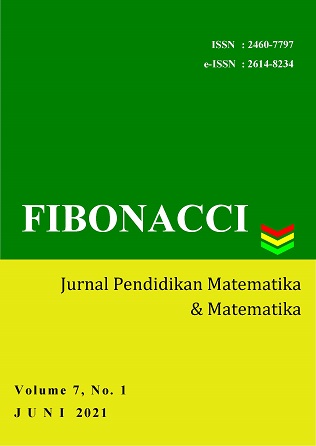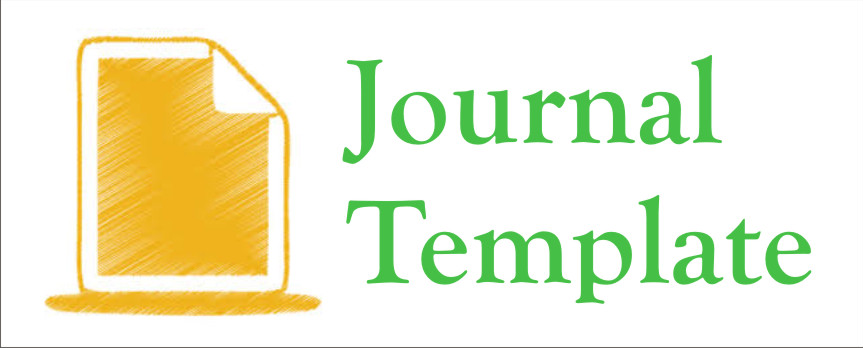PROFIL KEMAMPUAN LITERASI STATISTIK MAHASISWA CALON GURU MATEMATIKA
DOI:
https://doi.org/10.24853/fbc.7.1.19-28Kata Kunci:
Kemampuan Literasi Statistik, Mahasiswa Calon Guru Matematika, Taksonomi SOLO.Abstrak
Kemampuan literasi statistik merupakan kemampuan dalam melakukan interpretasi data dan informasi yang tersedia. Kemampuan tersebut merupakan salah satu kemampuan penting yang harus dimiliki oleh guru. Tujuan penelitian ini adalah untuk mendeskripsikan kemampuan literasi statistik mahasiswa calon guru Matematika yang dikaitkan dengan level berpikir taksonomi SOLO. Hasil analisis menunjukkan bahwa pencapaian kemampuan literasi statistic mahasiswa calon guru Matematika belum merata untuk setiap indikatornya, yaitu indikator penalaran terhadap data dan hasil statistika berada pada level multistruktural, indikator penalaran terhadap konsep dasar dan istilah statistika berada pada level unistruktural, indikator penalaran terhadap pengumpulan dan pengolahan data secara deskriptif berada pada level relasional, dan indikator melakukan interpretasi data berada pada level unistruktural.Referensi
Biggs, J., & Collis, K. F. 1982. Evaluating the Quality of Learning: the SOLO Taxonomy. New York: Academic Press.
Cobb, G. W., & Moore, D. 1997. "Mathematics, Statistics, and Teaching." The American Mathematical Monthly, Vol. 104(9), pp: 801–821.
Dasari, D. 2006. Kemampuan Literasi Statistis dan Implikasinya dalam Pembelajaran. Seminar Nasional Matematika Dan Pendidikan Matematika, 1–9.
delMas, R. C. 2002. "Statistical Literacy, Reasoning, and Thinking: A Commentary." Journal of Statistics Education, Vol. 10(2). https://doi.org/10.1080/10691898.2002.11910674
Gal, I. 2002. "Adults’ Statistical Literacy: Meanings, Components, Responsibilities." International Statistical Review, Vol. 70(1), pp: 1–25. https://doi.org/10.1111/j.1751-5823.2002.tb00336.x
Garfield, J., & Ben-Zvi, D. 2009. "Helping Students Develop Statistical Reasoning: Implementing a Statistical Reasoning Learning Environment." Teaching Statistics, Vol. 31(30), pp: 72–77.
Garfield, J., & Chance, B. 2000. "Assessment in Statistics Education: Issues and Challenges." Mathematical Thingking and Learning, Vol. 2(1), pp: 95–125.
Garfield, J., DelMas, R., & Zieffler, A. 2010. Assesing Statistical Thinking. In N. H. P. Bidgood & F. Jolliffe (Eds.), Assesment Methods in Statistical Education: An International Perspective (pp. 175–186). Milton: John Wiley & Sons.
Koleza, E., & Kontogianni, A. 2013. Assessing Statistical Literacy: What do Freshmen Know? In B. Ubuz, C. Haser, & M. A. Mariotti (Eds.), Proceedings of the Eighth Congress of the European Society for Research in Mathematics Education (CERME8). Ankara: Middle East Technical University.
Lane, D. M. n.d.. Online Statistics Education: An Interactive Multimedia Course of Study. [Online] Tersedia: http://onlinestatbook.com/2/graphing_distributions/graphing_distributionsSA.html.[23 Juli 2020]
Maryati, I., & Priatna, N. 2018. "Analisis Kemampuan Literasi Statistis Siswa Madrasah Tsanawiyah dalam Materi Statistika." Journal of Medives : Journal of Mathematics Education IKIP Veteran Semarang, Vol. 2(2), pp: 205-212. https://doi.org/10.31331/medives.v2i2.640
NCTM. 2000. Principles and Standards fo School Matematics. Reston, VA : National Council of Teachers of Mathematics.
Obiral, J. T., & Lapinid, M. R. . 2020. "The Use of Statistical Investigation in Assessing Students’Performance in Statistics." Action Research and Innovation in Science Education, Vol. 3(2), pp: 47–54.
OECD. 2006. PISA Released Items-Mathematics.[Online] Tersedia: https://www.oecd.org/pisa/38709418.pdf. [20 Juli 2020]
Rumsey, D. J. 2002. "Statistical Literacy as a Goal for Introductory Statistics Courses." Journal of Statistics Education, Vol. 10(3), pp: 1-12.
Sariningsih, R., & Herdiman, I. 2017. "Mengembangkan Kemampuan Penalaran Statistik dan Berpikir Kreatif Matematis Mahasiswa di Kota Cimahi melalui Pendekatan Open-Ended." Jurnal Riset Pendidikan Matematika, Vol. 4(2), pp: 239-246.
Sharma, S. 2017. "Definitions and Models of Statistical Literacy: A Literature Review. "Open Review of Educational Research, Vol. 4(1), pp: 118–133. https://doi.org/10.1080/23265507.2017.1354313
Sugiyono. 2015. Metode Penelitian Pendidikan (Pendekatan Kuantitatif, Kualitatif, dan R&D). Bandung: Alfabeta.
Takaria, J., & Talakua, M. 2018. "Kemampuan Literasi Mahasiswa Calon Guru ditinjau dari Kemampuan Awal Maematika." Jurnal Kependidikan, Vol. 2(2), pp: 395–408.
Tishkovskaya, S., & Lancaster, G. A. 2010. Teaching Strategies to Promote Statistical Literacy : Review and Implementation. In C.Reading (Ed.), International Conference on Teaching Statistics. International Statistical Institute.
Tishkovskaya, Svetlana, & Lancaster, G. A. 2012. "Statistical Education in The 21st Century: A Review of Challenges, Teaching Innovations and Strategies For Reform." Journal of Statistics Education, Vol. 20(2), pp: 1–56. https://doi.org/10.1080/10691898.2012.11889641
Verhoeven, P. 2006. Statistics Education in the Netherlands anda Falnders : An Outline of Introductory Courses at Universities and Colleges. ICOTS-7 Conference Proccedings, 1–5.
Yuniawati. 2018. Statistical Literacy and its Urgency for Students. Advances in Social Science, Education and Humanities Research, Volume 269, 3rd International Conference on Education Management and Administration (CoEMA 2018).
Zieffler, A., Garfield, J., Alt, S., Dupuis, D., Holleque, K., & Chang, B. 2008. "What does research suggest about the teaching and learning of introductory statistics at the college level? A Review of the Literature." Journal of Statistics Education, Vol. 16(2), pp: 1–25. https://doi.org/10.1080/10691898.2008.11889566
##submission.downloads##
Diterbitkan
Terbitan
Bagian
Lisensi
Authors who publish with this journal agree to the following terms:
- Authors retain copyright and grant the journal right of first publication with the work simultaneously licensed under a Creative Commons Attribution License that allows others to share the work with an acknowledgement of the work's authorship and initial publication in this journal.
- Authors are able to enter into separate, additional contractual arrangements for the non-exclusive distribution of the journal's published version of the work (e.g., post it to an institutional repository or publish it in a book), with an acknowledgement of its initial publication in this journal.
- Authors are permitted and encouraged to post their work online (e.g., in institutional repositories or on their website) prior to and during the submission process, as it can lead to productive exchanges, as well as earlier and greater citation of published work (See The Effect of Open Access).


